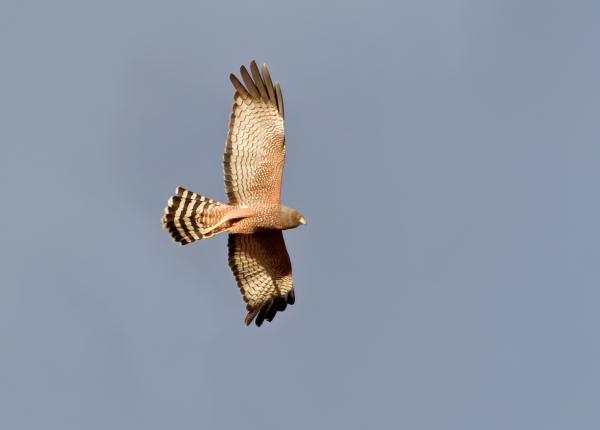Did You Know?
- This species is known by a few other names including Allied Harrier, Jardine's Harrier, Smoke Hawk, and Spotted Swamp Hawk
- There are not subspecies of the Spotted Harrier
How The Peregrine Fund is Helping
Though The Peregrine Fund doesn't work directly with the Spotted Harrier, our efforts in scientific research, habitat conservation, education, and community development help conserve birds of prey around the world. We also supply literature to researchers from our avian research library, which helps scientists around the world gather and share important information on raptor conservation. In addition, our Global Raptor Impact Network gives raptor researchers tools to more efficiently conduct their own studies while contributing to a global program. GRIN also provides citizen scientists a way to participate in raptor science and conservation.
Where They Live
The Spotted Harrier is found in Australia, Sulawesi, Sumba, Sula Island, Butung and Timor. It spends its time in open country, including savannas, rice fields, scrub, grassland, cultivated areas, and occasionally coastal fishponds.
What They Do
The Spotted Harrier is most often seen flying low over open country, holding its wings up in a V shape. When not in flight, it might perch on the ground, on fenceposts or in dead trees. It usually spends time alone or in pairs. In some southern areas, these harriers are generally move northward for the winter, but the extent, timing, and location of migratory movements vary with seasonal conditions and the availability of food.
Why They Need our Help
Globally, this species is categorized as Least Concern.
What They Eat
The Spotted Harrier has a varied diet. It will prey upon small mammals, such as small rabbits and rodents. It will also take birds such as quails, larks, and pipits. It also hunts reptiles, large insects, and will even occasionally feed on carrion. When searching for food, it flies low over open areas, sometimes hovering, and seizes prey by diving to the ground or by a short chase if prey is flushed.
Nests, Eggs, and Young
Unlike other harrier species, the Spotted Harrier nests most often in trees, though it will sometimes nest on the ground as well. More commonly, the nest is built in a living tree between 2-15 meters above the ground. The nest is made made of sticks and lined with green leaves. The female can lay between 2-4 eggs. The eggs will need to incubated for about 33 days, before the young can hatch. After they do, they will grow quickly. They will be ready to fly for the first time about 40 days after hatching. Once they are flying the young will remain with their parents for at least six weeks as they learn to find food, evade predators, and otherwise survive on their own.
Spotted Harrier and the World Center for Birds of Prey
The World Center for Birds of Prey offers fun ways to learn about all birds of prey. Interactive activities, tours, interesting videos, and a children's room with activities from coloring sheets to quizzes to costumes await you. The visitor center has many live raptors on display, and in the fall you can observe some of the raptors showing off their flying skills during our Fall Flight Shows. This is a great chance to see birds of prey up close and learn about the wonderful and interesting adaptations they have in order to survive in their respective habitats. There is also a touch table with feathers and other natural objects available for exploration. Though we are far from the Swamp Harrier's distribution, the area around the World Center for Birds of Prey is a great place to look for wild Northern Harriers flying low over the hills. Plus, our knowledgeable staff is on hand year-round to answer any questions you may have about the Spotted Harrier or any other bird of prey.
References:
Debus, S. and G. M. Kirwan (2020). Spotted Harrier (Circus assimilis), version 1.0. In Birds of the World (J. del Hoyo, A. Elliott, J. Sargatal, D. A. Christie, and E. de Juana, Editors). Cornell Lab of Ornithology, Ithaca, NY, USA.
Global Raptor Information Network. 2022. Species account: Spotted Harrier Circus assimilis. Downloaded from http://www.globalraptors.org on 25 Jul. 2022









